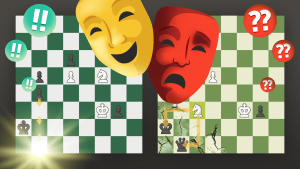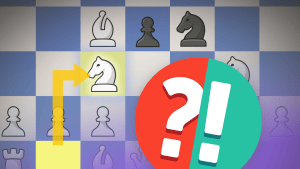
Fischer, Tal, and the most frequently forgotten chess rule
Let me start from the very end of this story.
Sousse Interzonal 1967 will always be remembered for Fischer's withdrawal after ten rounds. At that point he had seven wins and three draws. Even though the participants were supposed to play 22 games in that long round robin tournament, few people had any doubts about who was going to win it. But Fischer dropped out due to a conflict with the organizers.
Those are well-known facts. What you probably don't know is the story that took place during the free day while Fischer was still participating in the tournament. GM Eduard Gufeld vividly described it in his book.
A group of participants were relaxing on the beach, and GM Gufeld (who was a second of GM Geller), decided to play a prank on Fischer. He showed a certain position to a group of players and asked them for their help. Gufeld was going to show this position to Fischer and while he would think, everybody was supposed to say, "Oh, that's easy!" or "Ah, I see the solution, that's simple," etc.
Here is the position:
While Fischer was solving the puzzle, other participants were teasing him: "Bobby, do you want a hint?"
There was a look of horror on Fischer's face: the reputation of his chess genius was evaporating. But when he finally solved the puzzle, his smile was so broad and so genuine that Gufeld thought no actor in the entire world would be able to show the range of Fischer's emotions from horror to happiness - all in one minute!
Now let's jump from one extreme to another one. From a chess genius to a chess beginner. Let me ask you, my dear readers, a simple question. What's the most difficult rule for beginners to comprehend? What is the one rule they always forget about? If you've spent any time teaching beginners to play chess, then I'm sure you know the answer. Of course it is the en passant rule! But it turns out that this unusual rule sometimes is difficult to remember for strong grandmasters as well. Just look at the next position:
White's position was pretty bad already as he could barely move, but his last move 40.f4?? was a horrible blunder. After a simple en passant capture 40...exf3, White can resign. Instead Black played 40...gxf4?? and GM Adams managed to win this game and eventually qualify for the Candidates’ matches!
When I saw this game for the first time in one of the chess magazines, I thought that it was definitely some sort of a mistake since two strong GMs couldn't possibly overlook such a simple move. But it turns out that this is exactly what happened! Possible time trouble is not a valid excuse for me since a GM should see a move like this even in a bullet game. Most probably, both opponent's simply forgot about the en passant rule!

You may ask what does the en passant rule have to do with Fischer or Tal? Don't worry, we'll get there. While Gufeld didn't mention in his book where he got the position to torment Fischer, any avid fan of chess history will easily recognize the key features of the famous game that is our next puzzle:
Not done solving puzzles? Tactics Trainer is waiting!
This is an exquisite, yet typical, example of one of Tal's combinations! But you might have two questions.
- Why doesn't combination from the Gufeld's position work here? Good question! After the game it was suggested that 32.Qf6 (instead of 32. Qd7) with the threat of 33. Qg7!! and 34. Nf6 checkmate would win the game faster. But Black has a simple defense that ruins that beautiful combination: 32...Qf8!
- If Tal checkmated Black's king, why the result shown is a draw? Well, because the real game ended differently!
After the game ended, Tal showed everyone a very beautiful combination that didn't work. In his calculations after 31.Qf5+ g6 32.Qd7!! gxh5 33.Ng5+ Kg6 34.Qe6+! Kxg5 35.g3! h4 36.f4+ Kh5 he thought that after 37.g4+ Black could simply capture this dangerous pawn en passant - 37...hxg3. In his calculations he missed that the g2 pawn moves to g3 in the process of the combination and therefore the en passant rule is not valid anymore.

And that's how one of the most beautiful combinations in history was never actually played! It is funny that while GMs Adams and Dvoirys forgot about the en passant rule that existed, Tal saw the en passant rule when it was already gone!
RELATED STUDY MATERIAL
- Take a look at some other GM mistakes in FM Alex Krstulovic's article Grandmasters also can make mistakes!;
- Take a walk with Bobby Fischer in GM Roman Dzindzichashvili's video Greatest Chess Minds: Bobby Fischer Part 1;
- Is this the first time you've heard about En Passant? Time to take a class with Chess Mentor;
- Maintain your tactical readiness in our Tactics Trainer;
- Looking for articles with deeper analysis? Try our magazine: The Master's Bulletin.

